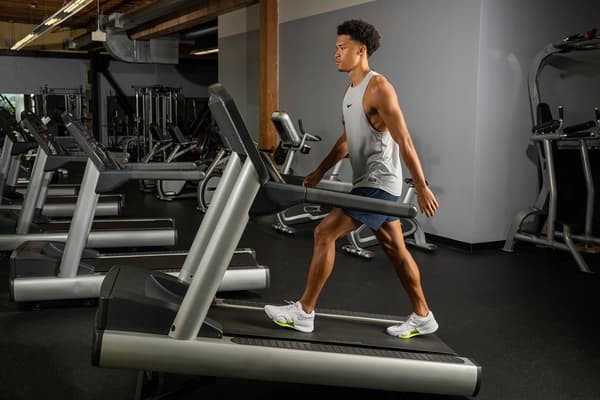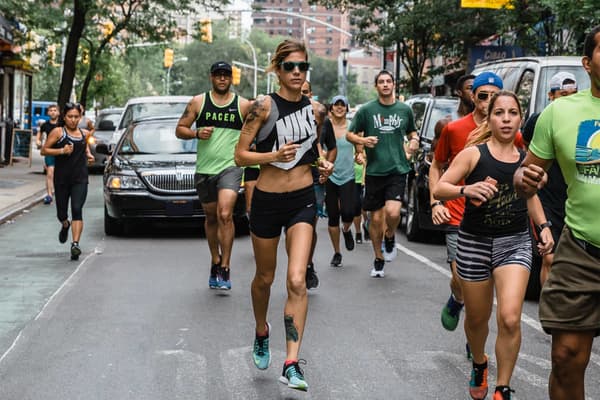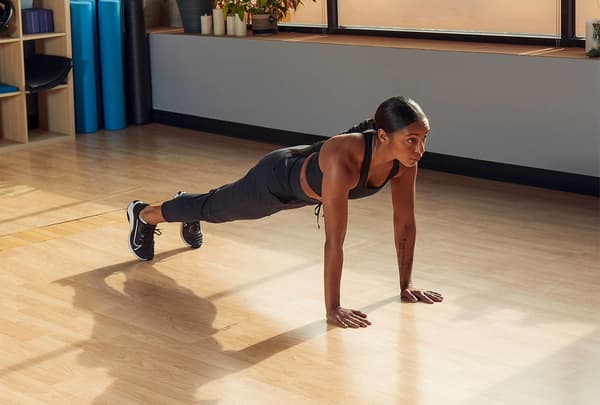Common Running Injuries to Watch Out For, According to Physiotherapists
Sport & Activity
Physiotherapists share symptoms and warning signs of injuries runners can encounter while training.

Whether you're a running newcomer or veteran marathoner, if you're a runner, chances are you want to do everything in your power to stay injury free and have longevity in the sport. It's a well-known fact that as we age, we lose our ability to skip warm-ups or cool-downs without facing potential consequences.
However seasoned you are, running injuries are a frequent by-product of hard training, regardless of the level. Below, experts share some of the most common running injuries, key injury warning signs and how to prevent injuries from happening in the first place. And remember, getting personalised medical guidance is always the best approach to tackling any injury. Make sure you check in with a doctor or other licensed medical professional—like a physiotherapist—for an accurate diagnosis and treatment plan.
Common Running Injuries
Novice or expert, all runners are susceptible to running injuries. You might think that running injuries occur as a result of acute trauma, like taking a misstep and twisting your ankle, but according to Corey Pasquarelli, DPT and a physiotherapist at NYU Langone's Orthopedic Center, most running injuries are caused by overuse.
The most common running injuries are Achilles tendonitis, iliotibial band syndrome (often referred to as IT band syndrome), plantar fasciitis, patellar tendonitis (or runner's knee) and shin splints, according to David Jou, PT, DPT.
(Related: Runner Problems: How to Stop Chafing, Blisters and Other Common Issues)
"Many running injuries creep up due to a combination of muscle imbalances, overtraining, poor running form and improper footwear", Jou said.
Because of the repetitive nature of running, low-grade abnormal forces are repeatedly applied to joints and the surrounding soft tissue. Over time, this can lead to decreased strength and flexibility, wear and tear, and eventually joint and soft-tissue breakdown. You can also become injured if your body isn't ready for or adapted to the demands of running and the mileage you're doing, Pasquarelli said.
Additionally, poor running mechanics and running in shoes that don't fit properly or provide you with the necessary support can lead to repetitive stress injuries, Jou said. In order to assess and address these issues, you should seek help from medical professionals and coaches, he said.
How to Prevent Running Injuries
To prevent these injuries, it's recommended that you learn how to identify the symptoms and warning signs of overtraining, often caused by ramping up mileage or intensity too quickly. Overtraining symptoms include fatigue, sleep disturbances, increased resting heart rate, increased susceptibility to getting sick, and changes in your mood or motivation, Jou said.
(Related: Does Working Out Before Bed Disrupt Your Sleep?)
"Athletes often run to train, but need to train to run", Jou said. To do this, you need to develop a running plan—with the help of a coach or expert—that suits your goals and schedule, providing you with structure and a strategy, he said.
You can adapt generic plans, but working with a coach is invaluable. The plan should be individualised to your ability level and focus on your goals; and it's important to be consistent with it to build a base and progress over time.
Whatever your plan entails, it's important that you slowly increase your mileage and listen to your body instead of powering through training, Pasquarelli said.
After running, don't forget to do recovery work, which goes beyond stretching and foam rolling. Getting adequate sleep, eating foods that provide you with energy and taking rest days in between runs, especially if you're a beginner, are essential to prevent injury.
(Related: Is Runner's Diet a Thing? Here's What the Experts Say)
In addition to coming up with a training strategy, "incorporating cross-training to add strength, mobility and variability to your routine can offset the repetitive stresses of running and help you stay clear of serious injuries", Jou said.
Cross-training with complementary modalities such as swimming, doing yoga, using the elliptical and strength training will improve your cardiovascular endurance while strengthening your body and providing you with a physical and mental break, Jou said. For your strength workouts, he recommended focusing on plyometric exercises, single-limb exercises, and multi-plane and rotational movements.
And if you suspect an injury is coming on, consult a physiotherapist immediately to get ahead of it by creating a rehab protocol instead of waiting for it to worsen.
While a privilege, it's optimal to build a support team consisting of a coach, personal trainer and physiotherapist to consult with if any questions or unusual pains arise as you train. If possible, working with a coach and physiotherapist for a few sessions can help tremendously.
Although mundane at times, don't forget the basics such as warming up and cooling down before and after your runs. Also, having a prehab programme that targets the feet, ankles, hips and core, that's performed consistently, can help prevent running injuries.
Words by Tamara Pridgett





